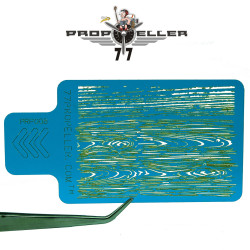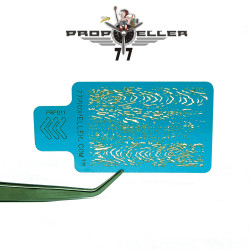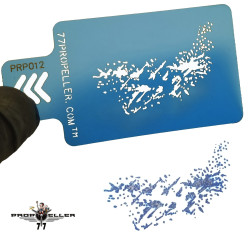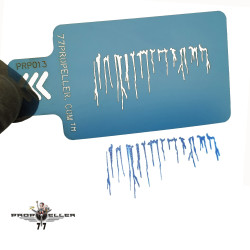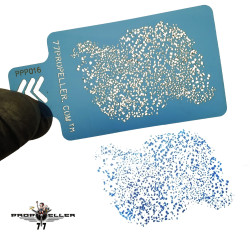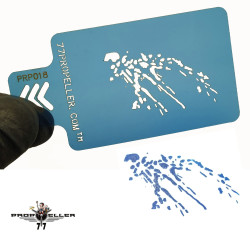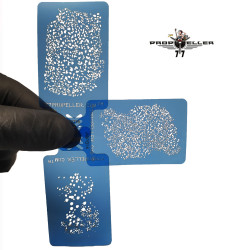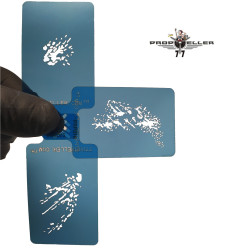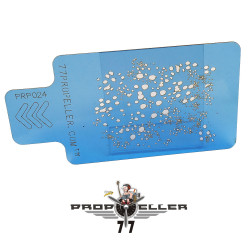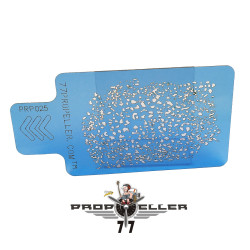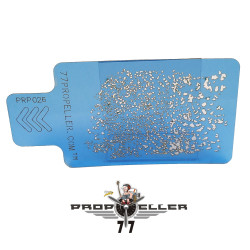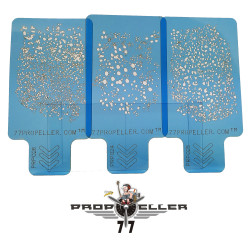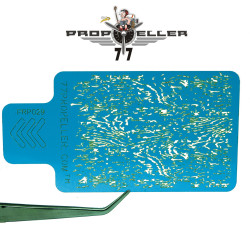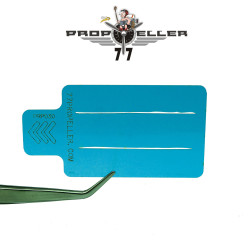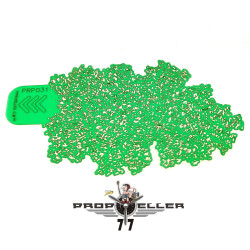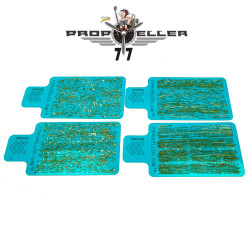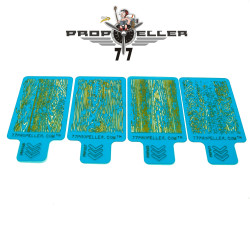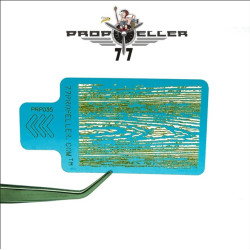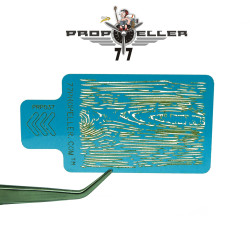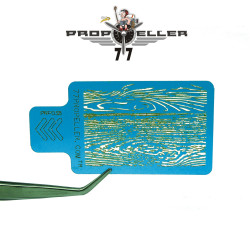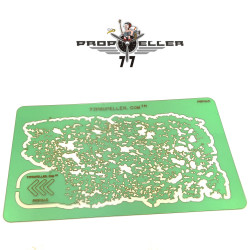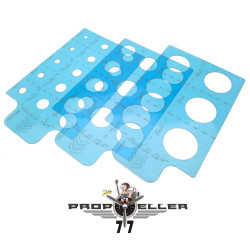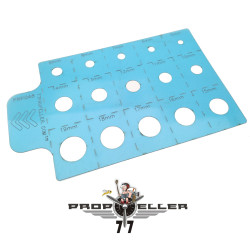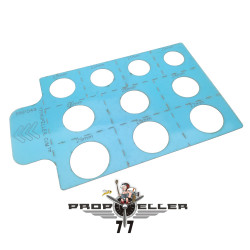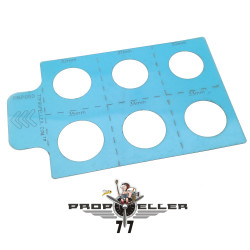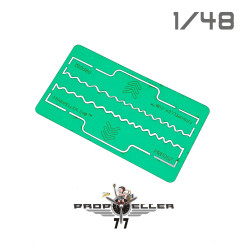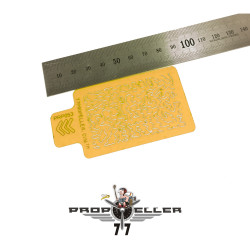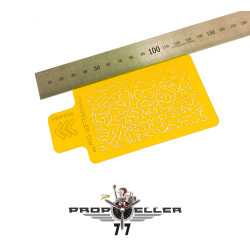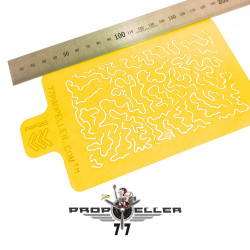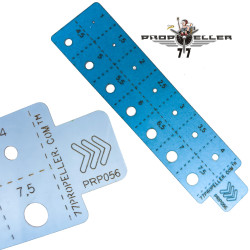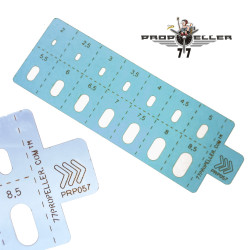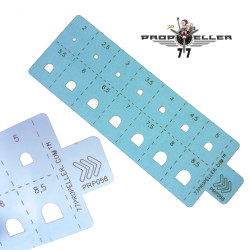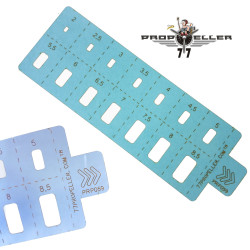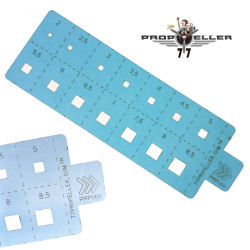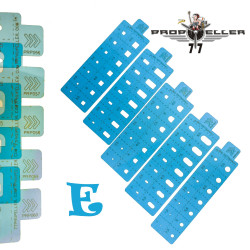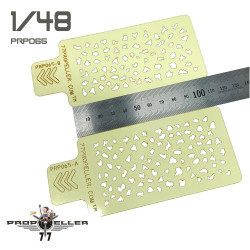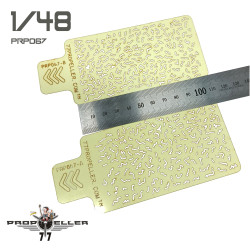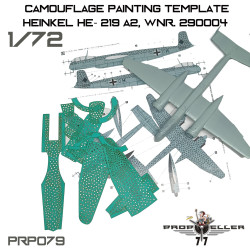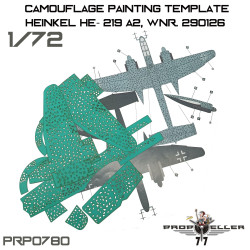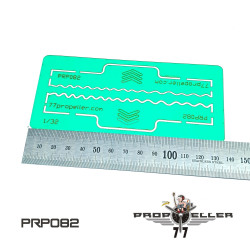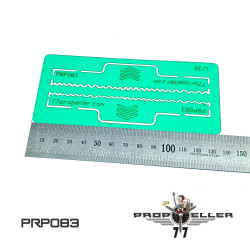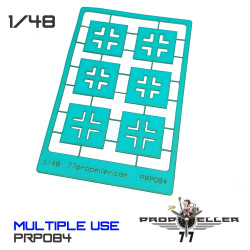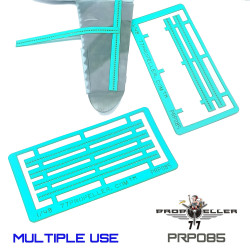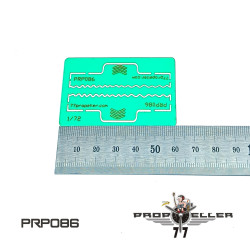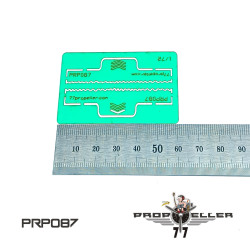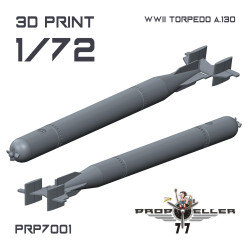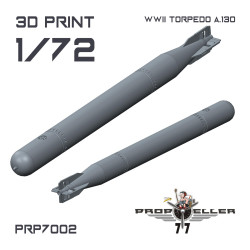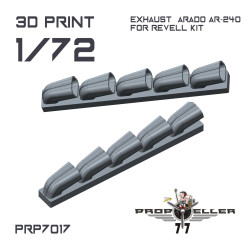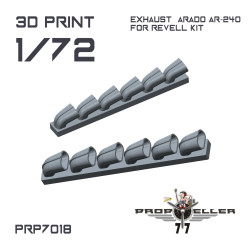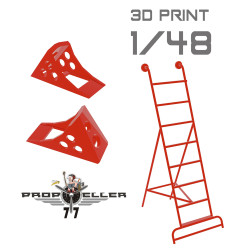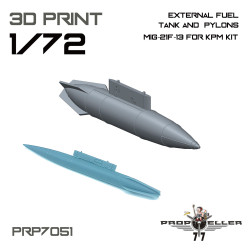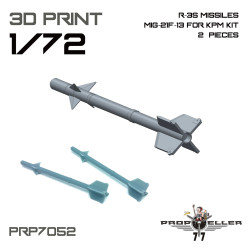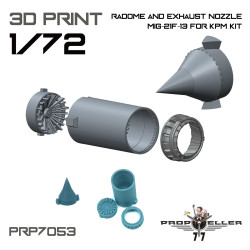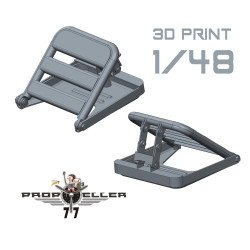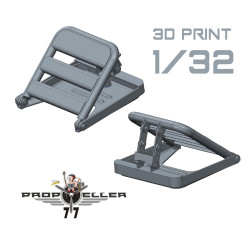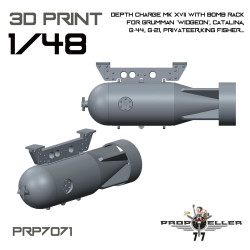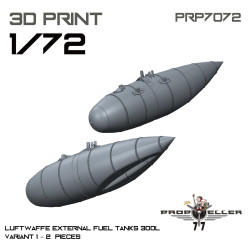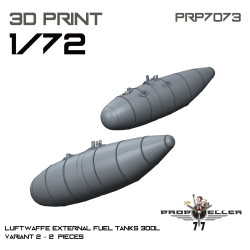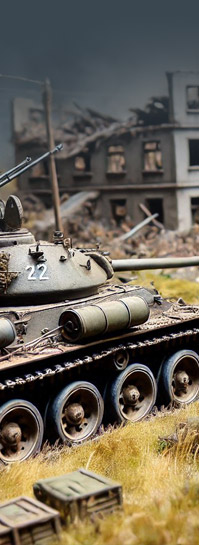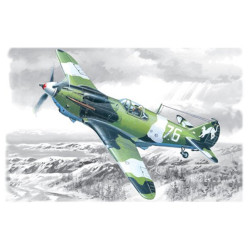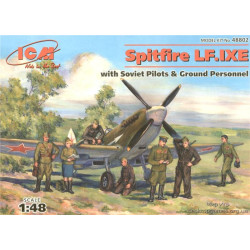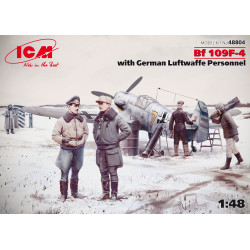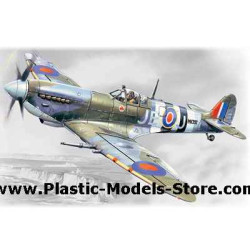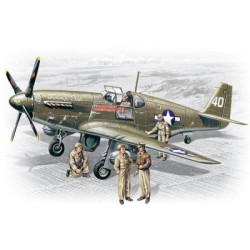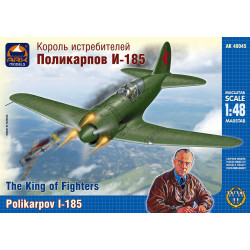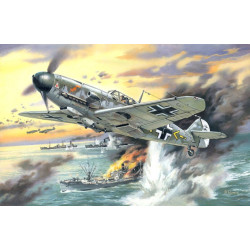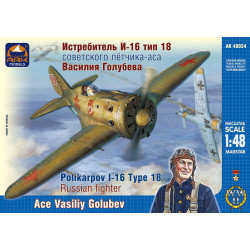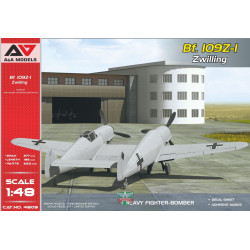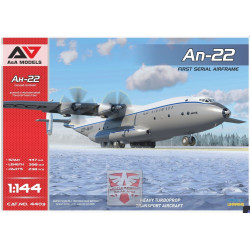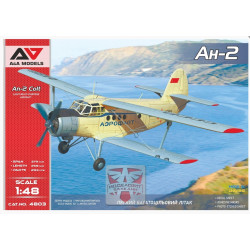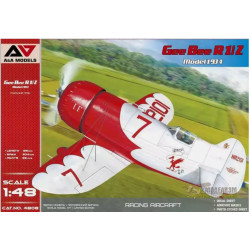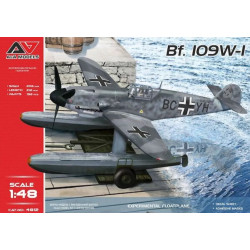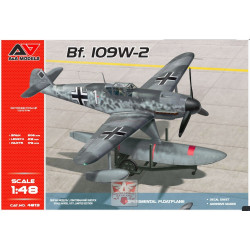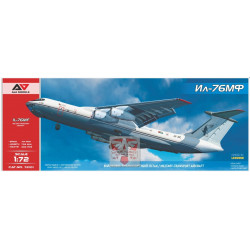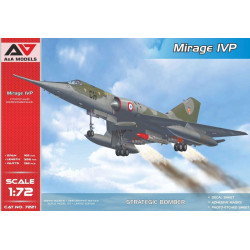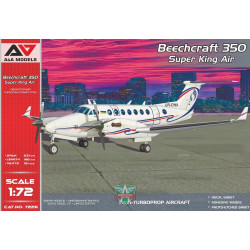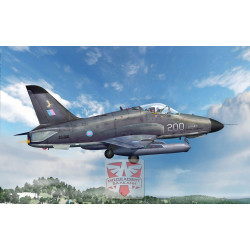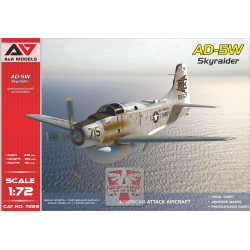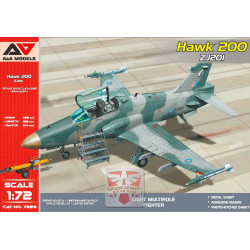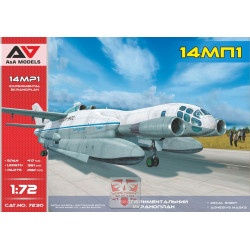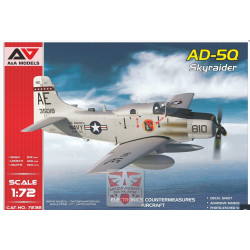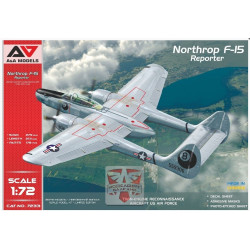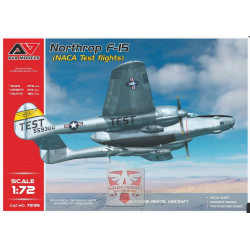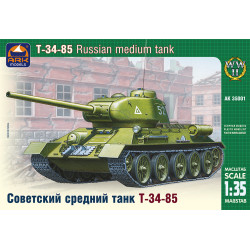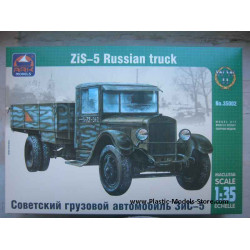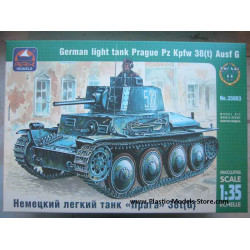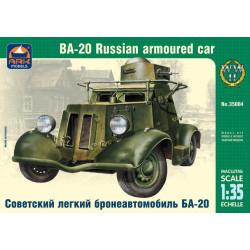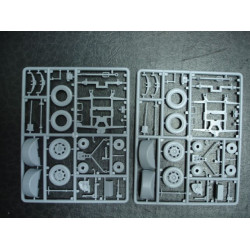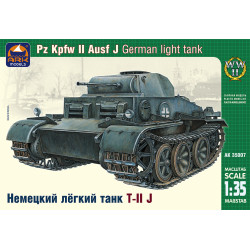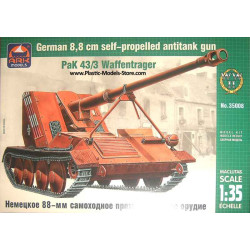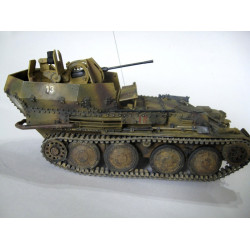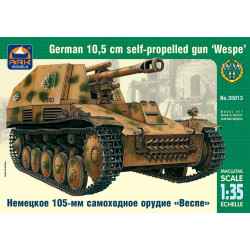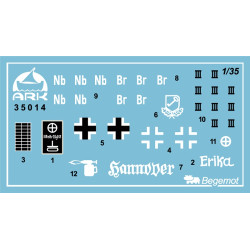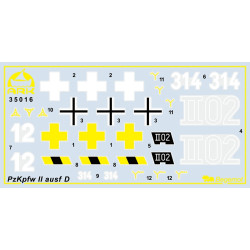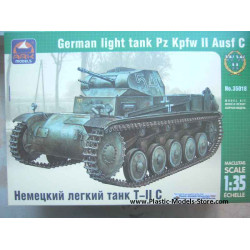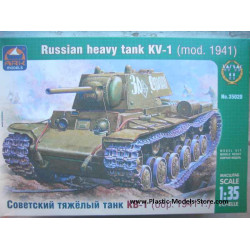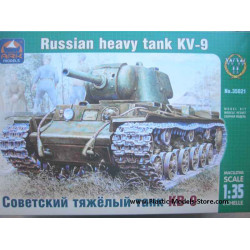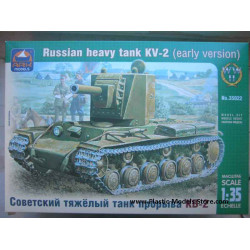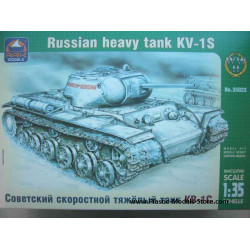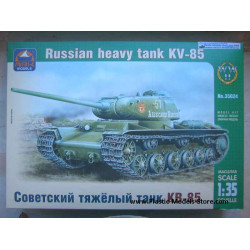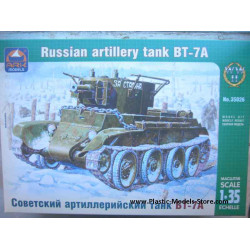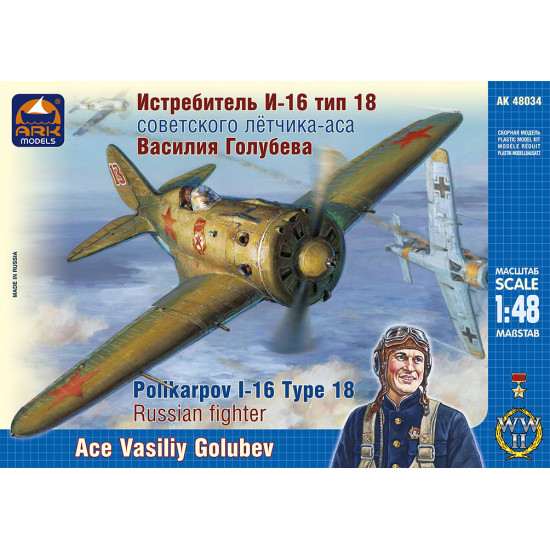
Russian Fighter I-16 type 18 (Ace Vasiliy Golubev)
1/48 WWII vehicle scale plastic model kit
Ark Models 48034
Manufacturer: Ark Models (Russia)
Scale: 1/48
Material: Plastic
Unpainted, Unassembled, Kit do not contain paints and glue.
Condition: New in Box
The Polikarpov I-16 was a Soviet fighter aircraft of revolutionary design; it was the world's first low-wing cantilever monoplane fighter with retractable landing gear to have attained operational status and as such "introduced a new vogue in fighter design."The I-16 was introduced in the mid-1930s and formed the backbone of the Soviet Air Force at the beginning of World War II. The diminutive fighter, nicknamed "Ishak" ("Donkey") by Soviet pilots, prominently featured in the Second Sino-Japanese War, the Battle of Khalkhin Goland theSpanish Civil War—where it was called the Rata ("Rat") by the Nationalists or Mosca ("Fly") by the Republicans. The Finnish nickname for I-16 was Siipiorava ("Flying Squirrel").While working on the Polikarpov I-15 biplane, Nikolai Nikolaevich Polikarpov began designing an advanced monoplane fighter. It featured cutting-edge innovations such as retractable landing gear and a fully enclosed cockpit, and was optimized for speed with a short stubby fuselage (similar to the Gee Bee R-1) and a Wright Cyclone radial engine in a NACA cowling. The aircraft was small, light and simple to build.
Full scale work on the TsKB-12 prototype began in June 1933 and the aircraft was accepted into production on 22 November 1933, a month before it took to the air. The TsKB-12 was of mixed construction using a wooden monocoque fuselage and wings based around a KhMA chrome-molybdenum steel alloy wing spar, dural ribs and D1 aluminum alloy skinning on the center and leading edges, with the remaining portions of the wings fabric covered. Another modern feature were the ailerons which ran almost the entire trailing edge of the wing and also operated as flaps (in the manner of more modern flaperons) by drooping 15°. The cockpit was covered by a forty cm (sixteen in) wide canopy which featured an Aldis tubular gun sight which could slide back and forth on runners fitted with rubber bungee cords. A 225 l (59.4 US gal) fuel tank was fitted directly in front of the cockpit. The main landing gear was fully retractable by a hand-crank. The armament consisted of a pair of 7.62 mm (0.30 in) ShKAS machine guns in the wings, mounted on the outboard side of the main gear and 900 rounds of ammunition.These features were proposed at first by Andrei N. Tupolev, however the NII VVS was more concerned about the stresses a typical combat aircraft was subjected to in combat, and initially considered the risk too great. However TsAGI, with the help of the 3rd Design Brigade under the leadership of Pavel O. Sukhoi and Aleksandr P. Putylov, eventually convinced NII VVS that what was being proposed was not only feasible, but would enhance the aircraft's performance.
The TsKB-12 was designed around the Wright Cyclone SR-1820-F-3 nine cylinder radial engine (rated at 529 kW/710 hp); a license to build this engine under the supervision of the Shvetsov design bureau in the Soviet Union was being negotiated. As the license was not yet approved, Polikarpov was asked to settle for the less powerful M-22 (Soviet-built version of the Gnome-Rhone Jupiter 9ASB which itself was a licensed version of the Bristol Jupiter VI) with 358 kW (480 hp). This was deemed acceptable because the projected top speed still exceeded 300 km/h (185 mph).
The M-22 powered TsKB-12 first took to the air on 30 December 1933 with the famous Soviet test pilot Valery Chkalov at the controls. The second TsKB-12 with a Cyclone engine and three-bladed propeller flew in January of the following year. Initial government trials in February 1934 revealed very good maneuverability but the aircraft did not tolerate abrupt control inputs. Thus the TsKB-12 was deemed dangerous to fly and all aerobatics were forbidden. The M-22 version was preferred due to the vibration of the Cyclone-powered aircraft. Pilots commented early on about the difficulty of climbing into the cockpit, a trait that persisted through the I-16's service life. Before continuing test flights the designers had to answer the question of spin behavior. Wind tunnel testing suggested that the TsKB-12, with its short tail, would enter an unrecoverableflat spin, but real-life trials were necessary to confirm this. Since Cyclone engines were rare it was decided to risk the M-22 prototype for this purpose. On March 1 and 2, 1934, Chkalov performed 75 spins and discovered that the aircraft had very benign stall behavior (dipping a wing and recovering without input from the pilot when airspeed increased) and intentional spins could be easily terminated by placing the controls in the neutral position. The stories of vicious spin behavior of the I-16 perpetuated in modern literature is unfounded (perhaps extrapolated from Gee Bee experience).The M-25 fitted I-16, the I-16 Type 5, featured a new engine cowling which was slightly smaller in diameter and featured nine forward-facing shuttered openings to control cooling airflow, a redesigned exhaust with eight individual outlet stubs, and other changes. The M-25 was rated at 474 kW (635 hp) at sea level and 522 kW (700 hp) at 2,300 m (7,546 ft). Due to the poor quality of the canopy glazing, the I-16 Type 5 pilots typically left the canopy open or removed the rear portion completely. By the time the Type 5 arrived, it was the world's lightest production fighter (1,460 kg/3,219 lb), as well as the worlds fastest, able to reach speeds of 454 km/h (282 mph) at altitude and 395 km/h (245 mph) at sea level. While the Type 5 could not perform the high-g maneuvers of other fighters, it possessed superior speed and climb rates, and had extremely responsive aileron control which gave it a very good roll rate which led to precision maneuvers in loops and split-Ss.
A total of 7,005 single-seat and 1,639 two-seat trainer variants were produced.
I-16
Role
Fighter
Manufacturer
Polikarpov
First flight
30 December 1933 (TsKB-12)
Introduction
1934
Retired
1950s (Spanish State)
Primary user
Soviet Air Force
Produced
1934-1942
Number built
8,644
| General Product Info | |
| Material | Plastic |
| Scale | 1/48 |
| Type | Fighter / Interceptor |
We have the lowest worldwide shipping. And it's totally simple.
EUROPE, USA, CANADA TURKEY, ISRAEL, EGYPT, UE CHINA, JAPAN, HK, S.KOREA | AU NZ MX South America, Asia | |
| Order weight up to 0.22kg or 0.48lb | US$ 8.90 | US$ 8.90 |
| Order weight up to 0.44kg or 0.97lb | US$ 13.95 | US$ 17.90 |
| Order weight over 0.44kg or 0.97lb | US$ 19.99 | US$ 29.99 |
| Order total over $150 | FREE | PROMO US$ 19.99 |
Shipping to some countries not qualifies for the free shipping option but costs not over $29.99 for any sized order. Sorry for that, your location is too far.
- Stock: Out Of Stock
- Model: ARK48034
- Weight: 0.52lb
- DATE ADDED: 24/04/2014
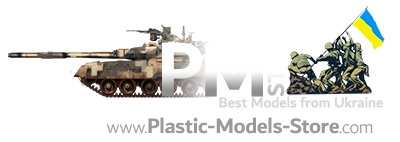



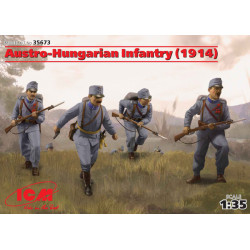

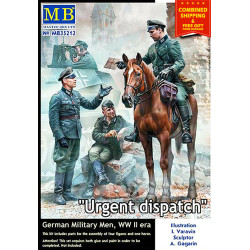
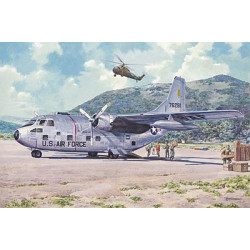
-250x250w.jpg)
